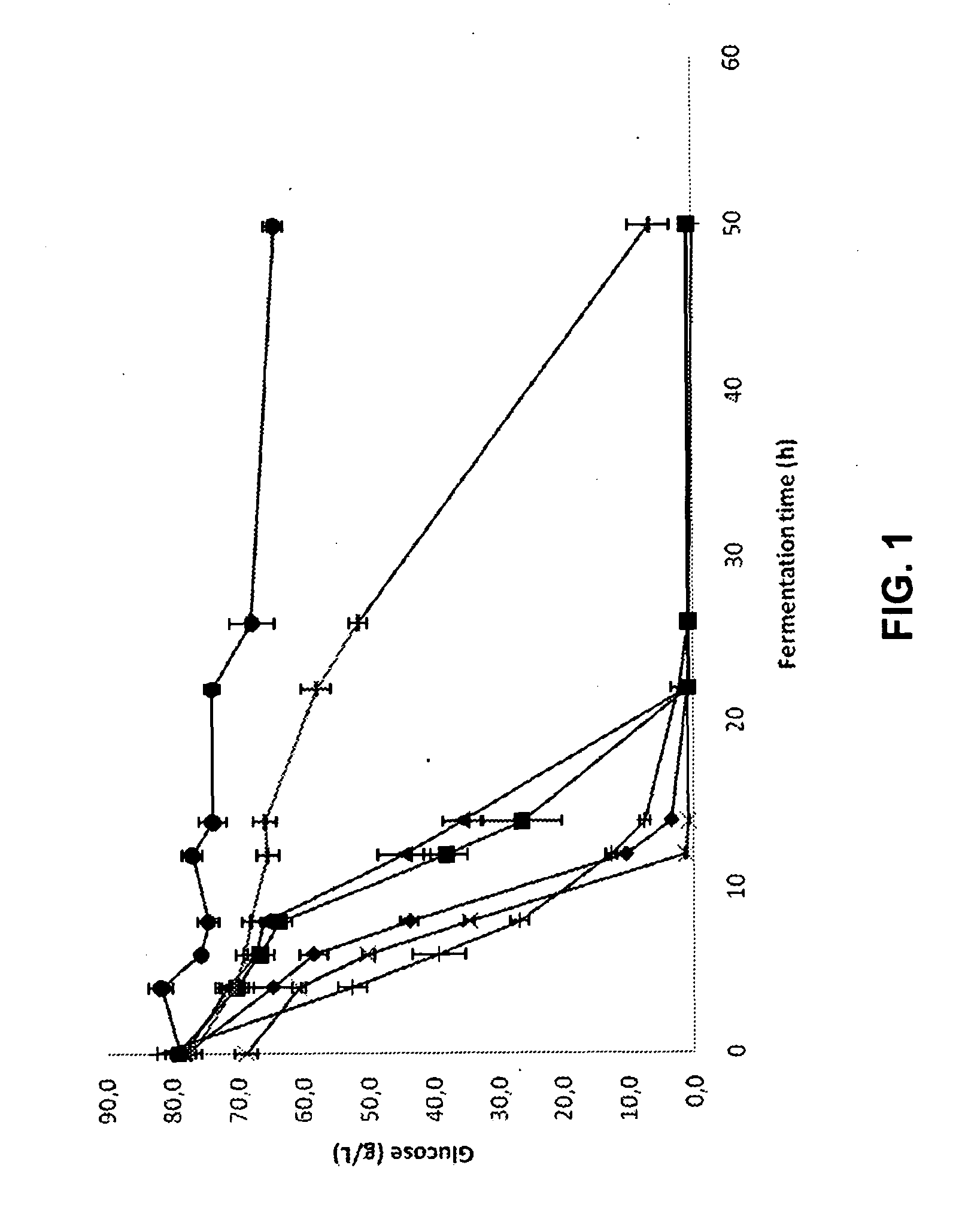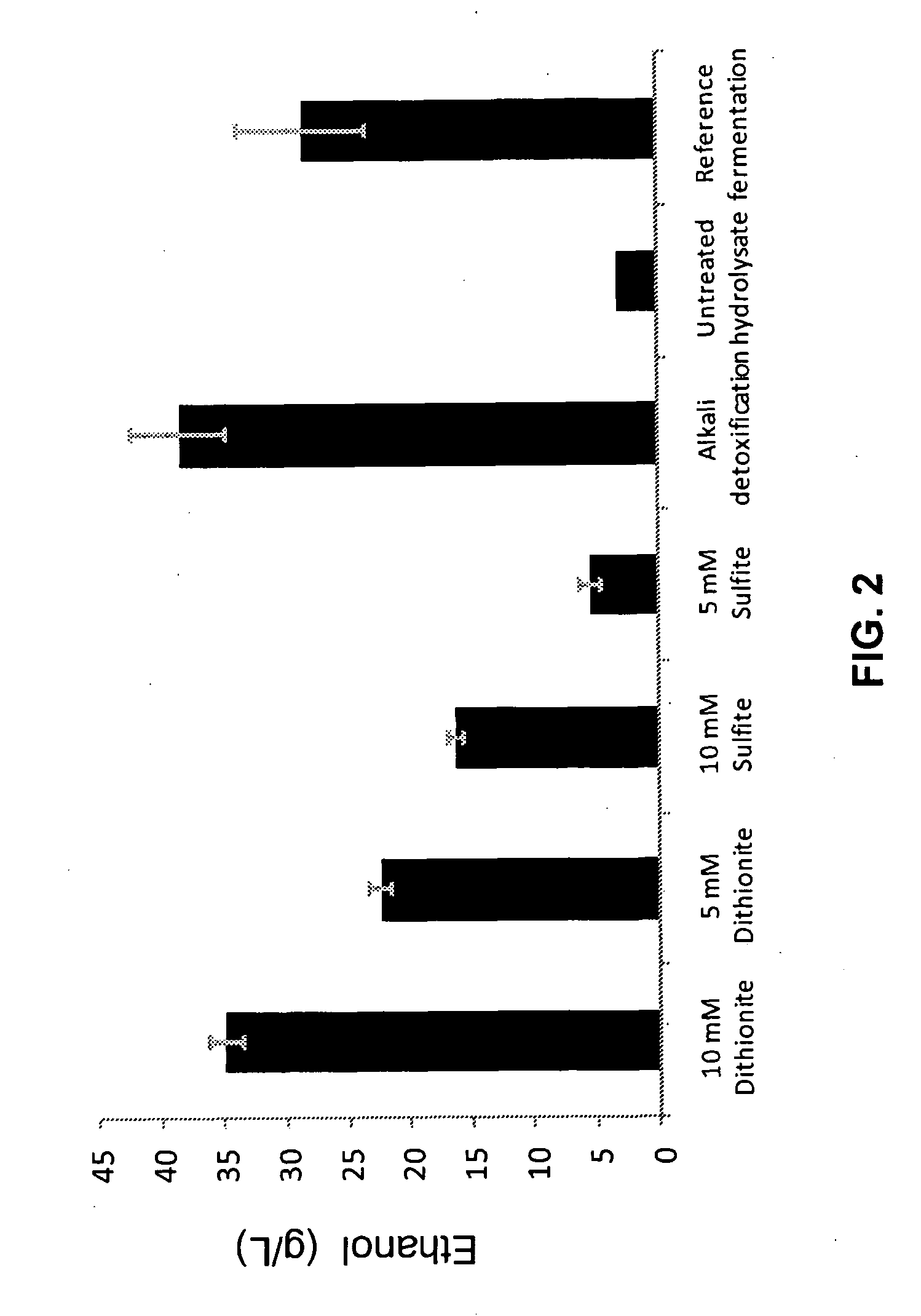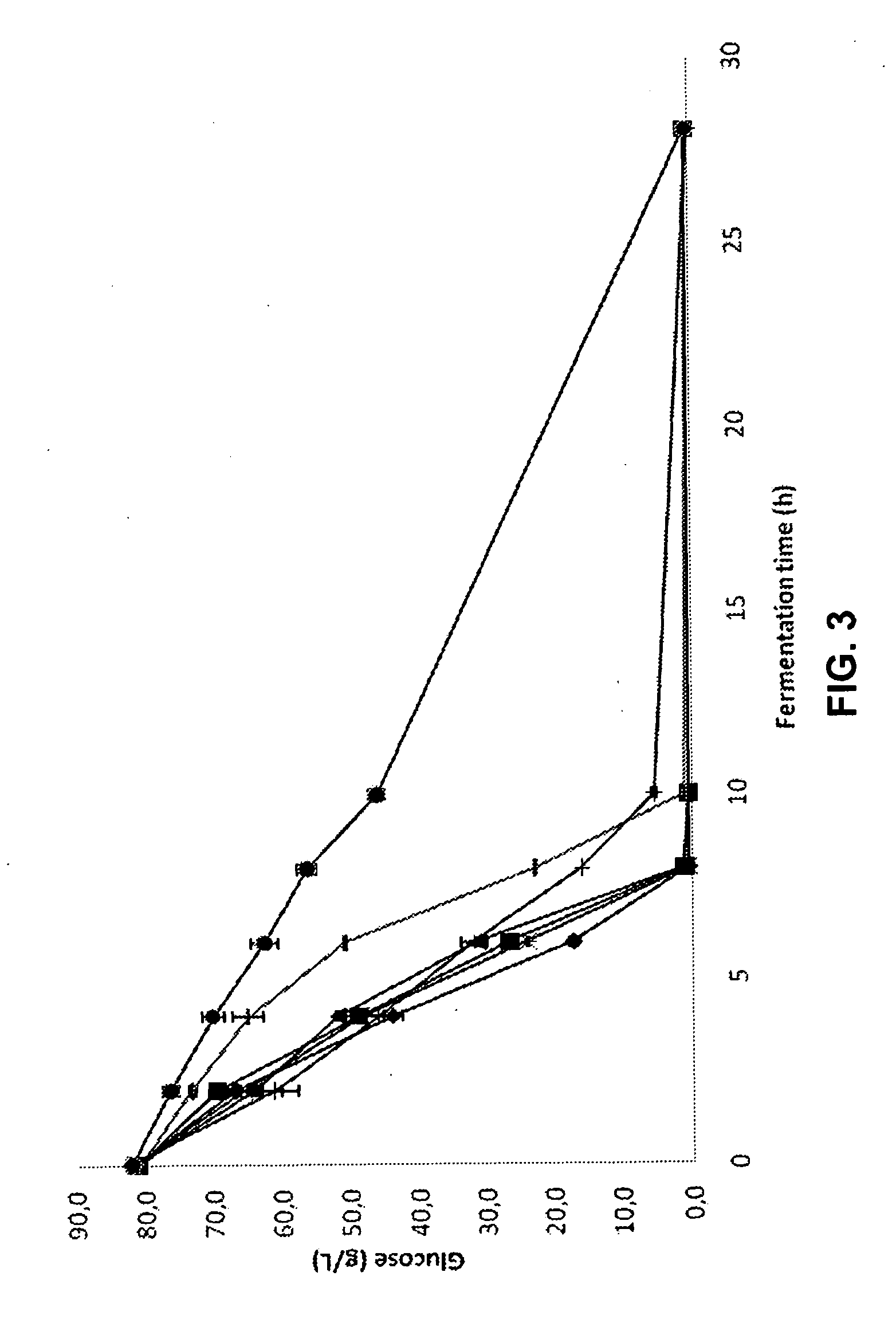Detoxification with Reducing Agents
a technology of reducing agent and detoxification, which is applied in the direction of chemical cell growth stimulation, biofuels, fermentation, etc., can solve the problems of poor ethanol yield and productivity, poor conversion of sugar, and reduced sugar yield, so as to reduce the inhibitory properties of the material subject to fermentation, and reduce the inhibition of fermentation.
- Summary
- Abstract
- Description
- Claims
- Application Information
AI Technical Summary
Benefits of technology
Problems solved by technology
Method used
Image
Examples
example 1
Detoxification of Hydrolysate in a Separate Hydrolysis and Fermentation (SHF) Process
Materials and Methods
[0061]Lignocellulose hydrolysates were produced from spruce wood and sugarcane bagass through thermochemical pretreatment and subsequent enzymatic hydrolysis.
[0062]For SHF experiments with sugarcane bagass, one kg (dry weight, DW) of dried sugarcane bagass was impregnated with 500 g of dilute sulfuric acid (4%) and kept in a plastic bag for 20 h. The impregnated sugarcane bagass was then loaded into a 30-liter reactor. The material was treated with steam at a temperature of 195° C. and a pressure of 14.1 bar during 15 min. The pretreated material, hereafter referred to as the sugarcane bagass slurry, was cooled and stored at 4° C. until further use.
[0063]The pretreatment of sugarcane bagass for SSF experiments was performed in the Swedish cellulosic ethanol pilot plant (operated by SEKAB E-Technology, Örnskoldsvik, Sweden). Sugarcane bagass was treated in a continuous mode in a ...
example 2
Detoxification of Hydrolysate in a Simultaneous Saccharification and Fermentation (SSF) Process
Materials and Methods
[0081]Addition of sodium dithionite and sodium sulphite was tested in an SSF process. Spruce was pretreated as described in Example 1 above. The spruce slurry was adjusted to pH 5.4 with a 5 M solution of sodium hydroxide. Ten 250-mL shake flasks equipped with magnetic stirrer bars were filled with 100 g of spruce slurry. Sodium dithionite or sodium sulphite was added to the slurries to final concentrations of 7.5 and 10 mM. The additions were performed at room temperature (23° C.) for 10 min with stirring. Duplicate experiments were made. Cellulase and cellobiase preparations were prepared and added to the slurry using the enzyme activity loadings as described in Example 1 above. Further, the yeast inoculum was prepared according to Example 1 above. Inoculums were added to give a start concentration of 2.0 g / L (cell dry weight) in every flask. No source of extra nutri...
example 3
Detoxification of Spruce Slurry in a Simultaneous Saccharification and Fermentation (SSF) Process: Ethanol Yield as a Function of Dithionite and Sulphite Concentrations
Materials and Methods
[0084]A spruce slurry was prepared according to Examples 1 and 2 above. Different flasks were filled with 100 g each of the spruce slurry and were subjected to a SSF process according to Example 2 above, but with different amounts of dithionite and sulphite added. The produced ethanol was monitored during the fermentation.
Results
[0085]Sodium dithionite was added such that the final concentration during fermentation was between 2.5-30 mM. Further, sodium sulphate was added such that the final concentration during fermentation was between 2.5-30 mM. The produced ethanol as a function of time is plotted in FIG. 6 and FIG. 7. It was seen that treatment with 7.5 mM, 10 mM and 15 mM sodium dithionite resulted in the highest ethanol production, but also 5 mM and 20 mM sodium dithionite resulted in high e...
PUM
| Property | Measurement | Unit |
|---|---|---|
| temperature | aaaaa | aaaaa |
| temperature | aaaaa | aaaaa |
| concentration | aaaaa | aaaaa |
Abstract
Description
Claims
Application Information
 Login to View More
Login to View More - R&D
- Intellectual Property
- Life Sciences
- Materials
- Tech Scout
- Unparalleled Data Quality
- Higher Quality Content
- 60% Fewer Hallucinations
Browse by: Latest US Patents, China's latest patents, Technical Efficacy Thesaurus, Application Domain, Technology Topic, Popular Technical Reports.
© 2025 PatSnap. All rights reserved.Legal|Privacy policy|Modern Slavery Act Transparency Statement|Sitemap|About US| Contact US: help@patsnap.com



